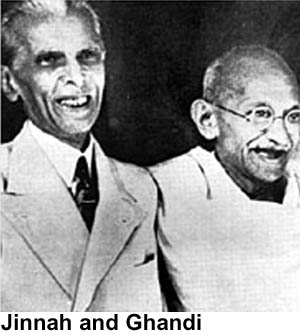
The Pakistani vision [Archives:2002/16/Reportage]
April 15 2002
Mubarak Shah
For the Yemen Times

On this day in 1940, British India’s Muslim leaders had at a convention in Lahore, now capital of Pakistan’s Punjab province, formally demanded a separate state comprising its Muslim-majority areas.
Their demand was not religious per se. Nor was it aimed at creating a theocratic state. A sizable section of Muslim clerics had indeed opposed it.
The demand was rooted in compelling ground realities and the Muslim community’s bitter experience of the preponderant Hindu majority, more well-off and were dominating trade and businesses. They also had a decisive presence in the administration and services.
The Muslims feared once the British were gone after freeing their colony, the Hindus would exploit these advantages to submerge them politically, socially, economically and culturally to the extinction of their distinct identity.
No less had their fear to do with the deep-seated Hindu anger over the 800-year Muslim rule on India before its enslavement by the British in the mid-19th century and open threats of rapid Hindu organizations to avenge it.
The Muslims’ apprehensions were particularly intensified by the Hindu-dominated Congress party’s unwillingness to allow them due respect and role in various dispensations under the limited home-rule granted to the natives by the Raj in the 1930s.
Disillusioned
This drove to disillusionment even those Muslims who once believed the two communities could co-exist as a free nation. Among them was Pakistan’s founder, Mohammed Ali Jinnah, who indeed had make his debut in politics with the Congress and had come to be popularly acclaimed as the “Ambassador of Hindu-Muslim Unity” for his espousal of national unity.
As the Congress grew increasingly aggressive and arrogant in asserting the Hindu majority power, so did mount the Muslim disillusionment immutably. The demand for a separate Muslim state became inevitable.
But the Pakistan envisioned at the Lahore convention was to be a liberal, tolerant, forward-looking, democratic Muslim state where every citizen would have equal rights and freedoms, irrespective of caste, creed of faith.
And when it came into being in 1974, it did start off like that. Though its wobbly march towards democracy got derailed in 1958 when its military commander Ayub Khan took over in a coup to rule the country for the next decade, yet religious tolerance, moderation and sectarian harmony prevailed all through and largely endured for many more years.
It was in the 1980s that this order gave way to President Ziaul Haq’s political ambitions and Washington’s anti-Soviet objectives in Afghanistan and religiosity began gaining ascendancy in the country.
The religious card
After failing to win popular support for his military rule, Zia chose the religious card to cultivate the clerical orders as his constituency. In the process, he blew away the prevalent religious tolerance and sectarian harmony from the country and dealt a serious blow to the status of minorities with measures like separate electorate system for them.
In this religious radicalization of Pakistan, the Americans had a big hand. Apart from recruiting Muslim zealots from all over the world, the CIA helped set up, with American money and petrodollars, several thousands of religious schools and seminaries in Pakistan to turn out fanatics for fighting the Soviets in Afghanistan.
As the CIA-supplied arms to the fighters had been ploughing back to Pakistan in quantities, illegal weapons flooded it to become a center of scary gun culture as well.
Worse , a minuscule minority of fanatics, armed to the teeth, reduced its predominantly moderate polity to a hostage to their extremist agenda.
Yet, even as spiraling religious extremism and sectarian violence were scaring away the pressingly-needed investment for reviving the country’s sagged economy, none of the Zia’s democratic civilian successors ventured to tame the wild fanatical forces either. Instead, they often shook hands with clerical orders for power games.
The country’s present military ruler, General Pervez Musharraf, however, vows to return it to its erstwhile religious moderation.
Last year, on August, 14, Pakistan’ s independence day, he warned his compatriots that the things had to change, not only because they were eating into the nation’s vitals but also because they were isolating the country internationally. He banned two rabid sectarian outfits and put another two politico-religious parties on the watch list.
Big changes
On January 12, he declared in a major policy statement that he would bring Pakistan bank to its founder’s vision as a moderate, progressive and forward-looking Muslim state. He outlawed three religio-political parties and two extremists groups; scrapped the separate electorate system for minorities; and announced radical reforms for religious schools including drastic revision of their curricula to suck them in the mainstream educational system.
But he is up against heavy odds, the extremists are presently lying glow for being humbled by the humiliating rout of their comrades-in-arms in Afghanistan, the Taliban and al-Qaeda fighters. They may try a comeback if the conditions are propitious.
That’s where lies the General’s biggest advantage. With their violence, bloodletting and religiosity, the extremist have alienated the masses irreversibly. He can bank on their support for curbing religious extremism to return the nation to the ways of moderation and modernity.
——
[archive-e:16-v:2002-y:2002-d:2002-04-15-p:./2002/iss16/report.htm]


